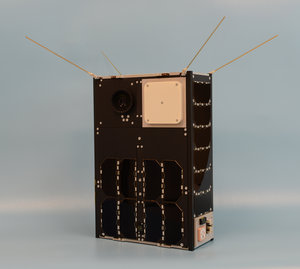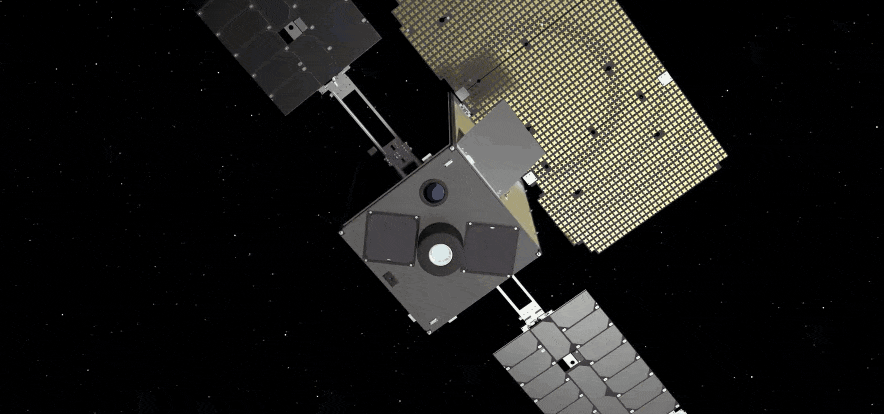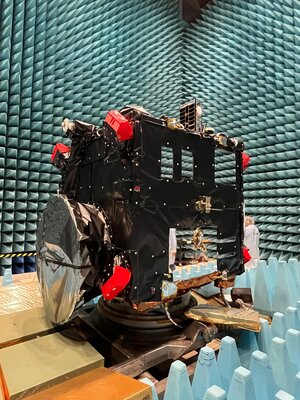Accept all cookies Accept only essential cookies See our Cookie Notice

About ESA
The European Space Agency (ESA) is Europe’s gateway to space. Its mission is to shape the development of Europe’s space capability and ensure that investment in space continues to deliver benefits to the citizens of Europe and the world.
Highlights
ESA - United space in Europe
This is ESA ESA facts Member States & Cooperating States Funding Director General Top management For Member State Delegations European vision European Space Policy ESA & EU Space Councils Responsibility & Sustainability Annual Report Calendar of meetings Corporate newsEstablishments & sites
ESA Headquarters ESA ESTEC ESA ESOC ESA ESRIN ESA EAC ESA ESAC Europe's Spaceport ESA ESEC ESA ECSAT Brussels Office Washington OfficeWorking with ESA
Business with ESA ESA Commercialisation Gateway Law at ESA Careers Cyber resilience at ESA IT at ESA Newsroom Partnerships Merchandising Licence Education Open Space Innovation Platform Integrity and Reporting Administrative Tribunal Health and SafetyMore about ESA
History ESA Historical Archives Exhibitions Publications Art & Culture ESA Merchandise Kids Diversity ESA Brand Centre ESA ChampionsSpace in Member States
Find out more about space activities in our 23 Member States, and understand how ESA works together with their national agencies, institutions and organisations.
Science & Exploration
Exploring our Solar System and unlocking the secrets of the Universe
Go to topicAstronauts
Missions
Juice Euclid Webb Solar Orbiter BepiColombo Gaia ExoMars Cheops Exoplanet missions More missionsActivities
International Space Station Orion service module Gateway Concordia Caves & Pangaea BenefitsLatest
Space Safety
Protecting life and infrastructure on Earth and in orbit
Go to topicAsteroids
Asteroids and Planetary Defence Asteroid danger explained Flyeye telescope: asteroid detection Hera mission: asteroid deflection Near-Earth Object Coordination CentreSpace junk
About space debris Space debris by the numbers Space Environment Report In space refuelling, refurbishing and removingSafety from space
Clean Space ecodesign Zero Debris Technologies Space for Earth Supporting Sustainable DevelopmentApplications
Using space to benefit citizens and meet future challenges on Earth
Go to topicObserving the Earth
Observing the Earth Future EO Copernicus Meteorology Space for our climate Satellite missionsCommercialisation
ESA Commercialisation Gateway Open Space Innovation Platform Business Incubation ESA Space SolutionsLatest
Enabling & Support
Making space accessible and developing the technologies for the future
Go to topicBuilding missions
Space Engineering and Technology Test centre Laboratories Concurrent Design Facility Preparing for the future Shaping the Future Discovery and Preparation Advanced Concepts TeamSpace transportation
Space Transportation Ariane Vega Space Rider Future space transportation Boost! Europe's Spaceport Launches from Europe's Spaceport from 2012Latest

Antenna to link up CubeSat chains
Thank you for liking
You have already liked this page, you can only like it once!
Many small satellites might in the future do the same – or better – job as their single big equivalent. With that approach in mind, this high-frequency steerable antenna has been designed to link together orbital chains of shoebox-sized CubeSats.
CubeSats are mini-satellites built up from standardised 10 cm boxes, initially developed for educational uses but increasingly finding operational uses, such as constellations for telecommunications or Earth observation.
“The idea behind this project was to develop a steerable reflector antenna that is small enough to fit within half of a single CubeSat unit,” explains ESA antenna engineer Maarten van der Vorst.
“Stowed within the unit for launch, the antenna would then be deployed, then able to facilitate inter-satellite links between a constellation of CubeSats, for instance allowing individual satellites to swap data, or for one CubeSat ‘mothership’ to perform data downlink and uplink duties for the rest. With one antenna at the front and back of each satellite to transmit messages through an entire CubeSat chain, with our testing shows the antennas could operate across hundreds of kilometres of distance.”
This demonstrator antenna, which was built using hybrid manufacturing techniques – combining traditional machining with selective laser melting 3D printing – has been designed to operate at 60 GHz, offering high bandwidth despite its small size.
The project was led for ESA by PicoSats in Italy with ESTECO and the University of Trieste providing technical electromagnetic expertise and the antenna's pointing mechanism respectively. It was supported through ESA’s Advanced Research in Telecommunications Systems Advanced Technology, ARTES-AT.
-
CREDIT
Picosats -
LICENCE
ESA Standard Licence

GomX-4B CubeSat

Getting CubeSats moving

PICASSO CubeSat

Proba-V’s plus one















 Germany
Germany
 Austria
Austria
 Belgium
Belgium
 Denmark
Denmark
 Spain
Spain
 Estonia
Estonia
 Finland
Finland
 France
France
 Greece
Greece
 Hungary
Hungary
 Ireland
Ireland
 Italy
Italy
 Luxembourg
Luxembourg
 Norway
Norway
 The Netherlands
The Netherlands
 Poland
Poland
 Portugal
Portugal
 Czechia
Czechia
 Romania
Romania
 United Kingdom
United Kingdom
 Slovenia
Slovenia
 Sweden
Sweden
 Switzerland
Switzerland
























